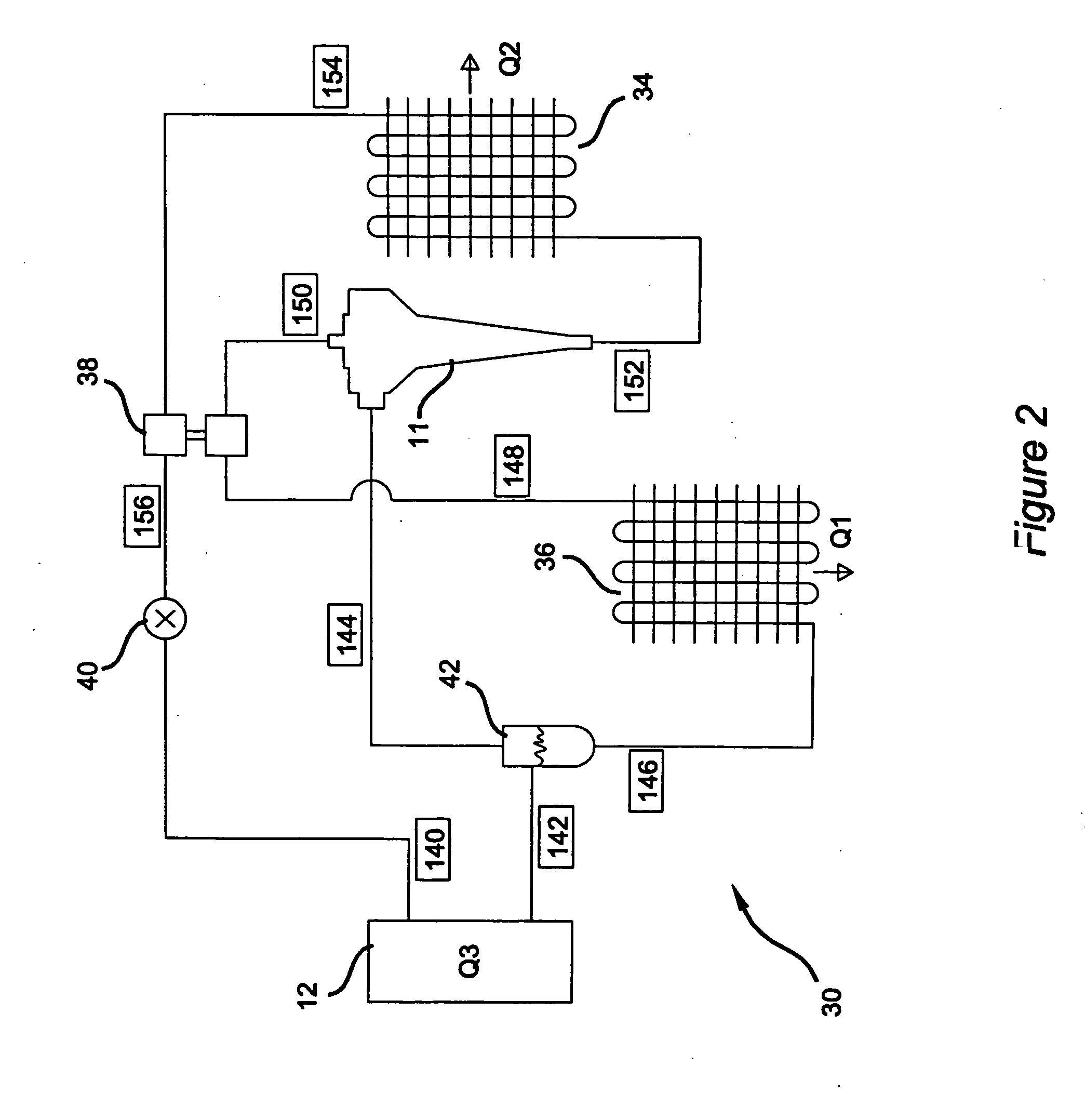Supersonic vapor compression and heat rejection cycle
- Summary
- Abstract
- Description
- Claims
- Application Information
AI Technical Summary
Benefits of technology
Problems solved by technology
Method used
Image
Examples
first embodiment
[0034] Referring now to FIG. 4, nozzle / ejector, unit 11 is shown in section to include a valve body 200 and a nozzle block 202 mounted in valve body 200. Valve body 200 is a hollow cylindrical structure which defines a nozzle section 204, a converging ejector section 206, and a discharge section 208. An annular vapor inlet chamber 210 is defined between a portion of nozzle block 202 and a valve body 200. The subsonic vapor inlet stream flowing from the discharge side of the fuel cell stack is delivered to inlet chamber 210 through one or more vapor inlet ports 212. Likewise, the subsonic liquid inlet stream is delivered through a central liquid inlet port 216 to one end of a long liquid flow passage 214 formed in nozzle block 202.
[0035] Nozzle section 204 of valve body 200 defines an annular vapor nozzle 218 defined by a restricted throat area formed between a convergent / divergent inner wall surface of valve body 200 and a frusto-conical outer wall surface of nozzle block 202. An ex...
second embodiment
[0038] Referring now to FIG. 5, supersonic nozzle / ejector unit 11 is shown to include a hollow cylindrical valve body 300 and a nozzle tube 302 disposed within valve body 300. Valve body 300 defines an inlet nozzle section 304, an ejector section 306, and a discharge section 308. An annular vapor inlet chamber 310 is defined between valve body 300 and nozzle tube 302 and is adapted to receive the subsonic vapor inlet stream. Likewise, the subsonic liquid inlet stream is delivered through an elongated flow passage 314 formed in nozzle tube 302. Nozzle section 304 of valve body 300 defines an annular vapor nozzle 318 that is formed between a convergent / divergent section of valve body 300 and nozzle tube 302. An expansion chamber 320 is located downstream of vapor nozzle 318 and upstream of a liquid nozzle 322 formed at the terminal end of liquid flow passage 314. In addition, an acceleration chamber 324 is formed between nozzle tube 302 and a bulbous portion 325 of ejector section 306...
PUM
 Login to View More
Login to View More Abstract
Description
Claims
Application Information
 Login to View More
Login to View More - R&D
- Intellectual Property
- Life Sciences
- Materials
- Tech Scout
- Unparalleled Data Quality
- Higher Quality Content
- 60% Fewer Hallucinations
Browse by: Latest US Patents, China's latest patents, Technical Efficacy Thesaurus, Application Domain, Technology Topic, Popular Technical Reports.
© 2025 PatSnap. All rights reserved.Legal|Privacy policy|Modern Slavery Act Transparency Statement|Sitemap|About US| Contact US: help@patsnap.com



